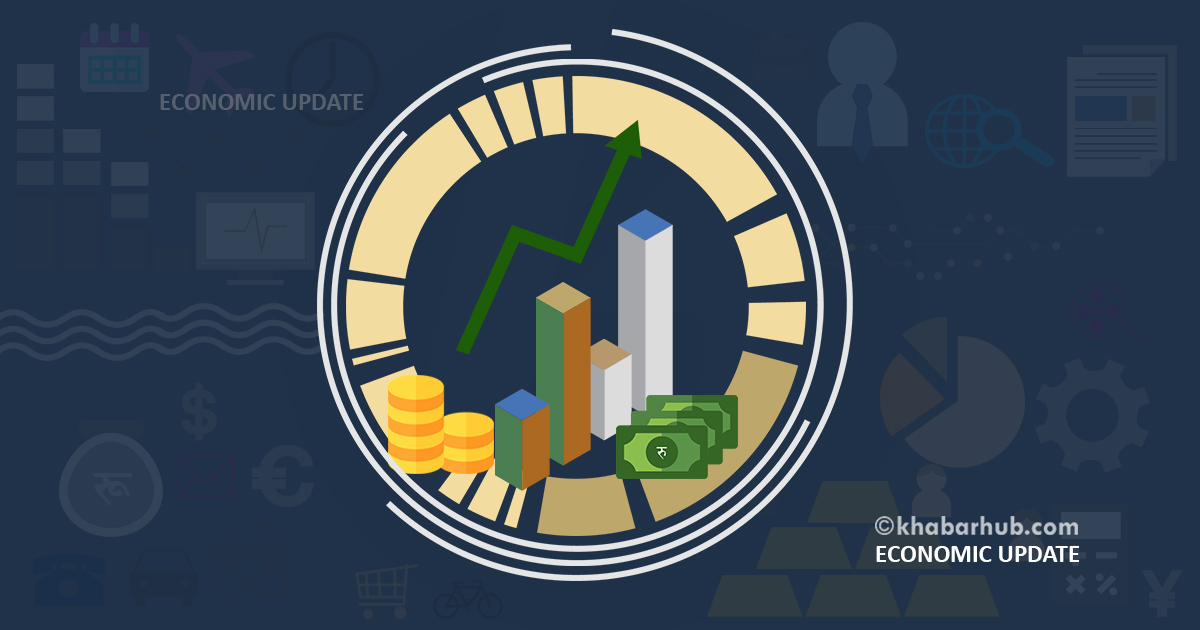KATHMANDU: Economic Digest offers a concise yet comprehensive overview of significant business happenings in Nepal, presented in easily digestible summaries.
Gold market hits record high on May 16 in Nepal
Nepal’s gold market surged to unprecedented levels, achieving a historic milestone on May 16, 2024. The price of fine gold surged by Rs. 1,600, soaring to an extraordinary Rs. 1,40,000 per tola. This marks a significant increase from its previous price of Rs. 1,38,400.
The surge in Nepal’s gold market to unprecedented levels reflects a significant shift in investor sentiment and market dynamics. The substantial increase in the price of fine gold and Tejabi gold indicates strong demand and possibly supply constraints within the domestic market.
The previous peak price recorded on April 19th, 2024, underscores the ongoing volatility and upward trend in gold prices. This suggests a sustained pattern of price appreciation, possibly driven by factors such as inflationary pressures, geopolitical tensions, or changes in global economic conditions.
Furthermore, the cost of silver also experienced an uptick of Rs. 60 per tola, reaching a new price of Rs. 1,805 per tola, up from Wednesday’s Rs. 1,745 per tola.
The record-high prices in Nepal’s gold market signify a complex interplay of domestic and international factors, with implications for investors, consumers, and the broader economy.
NEPSE inches up by 0.79 points on Thursday; Microfinance sector takes lead
The Nepal Stock Exchange (NEPSE) Index saw a marginal increase, indicating a relatively stable trading day following the previous session’s downturn. Despite the index’s modest gain, the market exhibited volatility, as evidenced by the fluctuations between intraday highs and lows.
NEPSE Index experienced a modest uptick of 0.03%, equivalent to 0.79 points, concluding the trading day at 2,018.76 points on Thursday. This followed a preceding session where it incurred a loss of 9.54 points.
Commencing at 2,023.33, the day’s trading journey witnessed fluctuations, with the index hitting an intraday peak of 2,029.10 before sliding to an intraday low of 2,009.35.
Despite the fluctuations, trading remained active, with 315 stocks changing hands through 57,218 transactions.
The total volume of shares traded tallied 8,282,556, amounting to a turnover of Rs. 4.23 Arba.
Of notable interest is the performance of the microfinance sector, which led with a 3.80% gain. This sector’s outperformance may signify investor confidence or specific sectoral factors driving its growth, warranting further analysis into the underlying reasons for its strength.
Nepal witnesses 576,542 departures for foreign employment in first 10 months of this year
In the initial 10 months of the ongoing fiscal year, Nepal experienced a significant outflow of individuals seeking foreign employment opportunities, with a total of 576,542 departing the country. This translates to an average of 57,657 Nepali nationals leaving per month during this period.
The substantial number of departures for foreign employment reflects a continuing trend in Nepal’s labor migration. Despite various challenges, including the COVID-19 pandemic and associated restrictions, the demand for foreign employment remains robust among Nepali citizens.
This could be attributed to factors such as the timing of recruitment processes by foreign employers and the completion of academic semesters, allowing individuals to pursue employment opportunities abroad.
Overall, the data underscores the enduring significance of foreign employment as a livelihood strategy for many Nepali citizens and the need for comprehensive policies to safeguard the rights and welfare of migrant workers.
Annapurna Circuit draws record 177,182 foreign visitors signifying tourism resurgence
The Annapurna Circuit, renowned for its scenic trekking routes, witnessed an unprecedented influx of 177,182 foreign tourists over the span of the last 10 months.
The Annapurna Conservation Area Project (ACAP) stated that the peak visitation occurred during March-April, with 35,265 travelers exploring the region. Among these visitors, 79,232 were from South Asian countries, while 97,950 arrived from other parts of the world.
Notably, the months of September-October and April-May are deemed optimal for trekking in this area. While Indian tourists typically opt for surface routes to destinations like Muktinath, visitors from other countries often prefer trekking adventures. This surge in tourism activity underscores a notable resurgence in the region’s tourism sector.
Private sector vital for reaching 2,800 MW electricity goal: Kulman Ghising
Executive Director of the Nepal Electricity Authority (NEA), Kulman Ghising, underscored the pivotal role of the private sector in achieving Nepal’s ambitious goal of generating 2,800 megawatts of electricity over the next decade.
Ghising emphasized the significance of private sector participation in Nepal’s hydropower generation, asserting that their involvement is indispensable for reaching the targeted electricity output. He advocated for proactive measures to incentivize and facilitate private sector contributions towards meeting the 10-year electricity generation objective.
Ghising’s statements reflect a pragmatic approach to addressing Nepal’s energy needs and the crucial role of the private sector in achieving the nation’s electricity generation targets.
Furthermore, Ghising affirmed the NEA’s receptiveness to the demands and proposals put forth by hydropower industry stakeholders, signaling a collaborative approach between the authority and private entities in advancing Nepal’s energy infrastructure.
Birgunj Dry Port surpasses revenue expectations
The Dry Port Customs Office in Birgunj has reported an impressive revenue collection of 40 billion 383 million 38 thousand rupees during the first 10 months of the current fiscal year. This figure exceeds expectations, with the office achieving 60.72 percent of its revenue target despite market challenges stemming from an economic recession.
The Department of Customs had set a revenue target of 54 billion 27 billion 21 lakh 35 thousand rupees for the same period. Despite a decrease in cargo train arrivals from three to two daily, the port’s revenue performance demonstrates resilience and efficient management amidst changing market dynamics.
The revenue collection port indicates a significant achievement, surpassing expectations despite challenges posed by an economic slowdown.
(Compiled and prepared by Srija Khanal)
Economic Digest is a daily morning economic digest, basically relatable summations of the most important business news, and happenings from Nepal into easy-to-understand summaries.









Comment